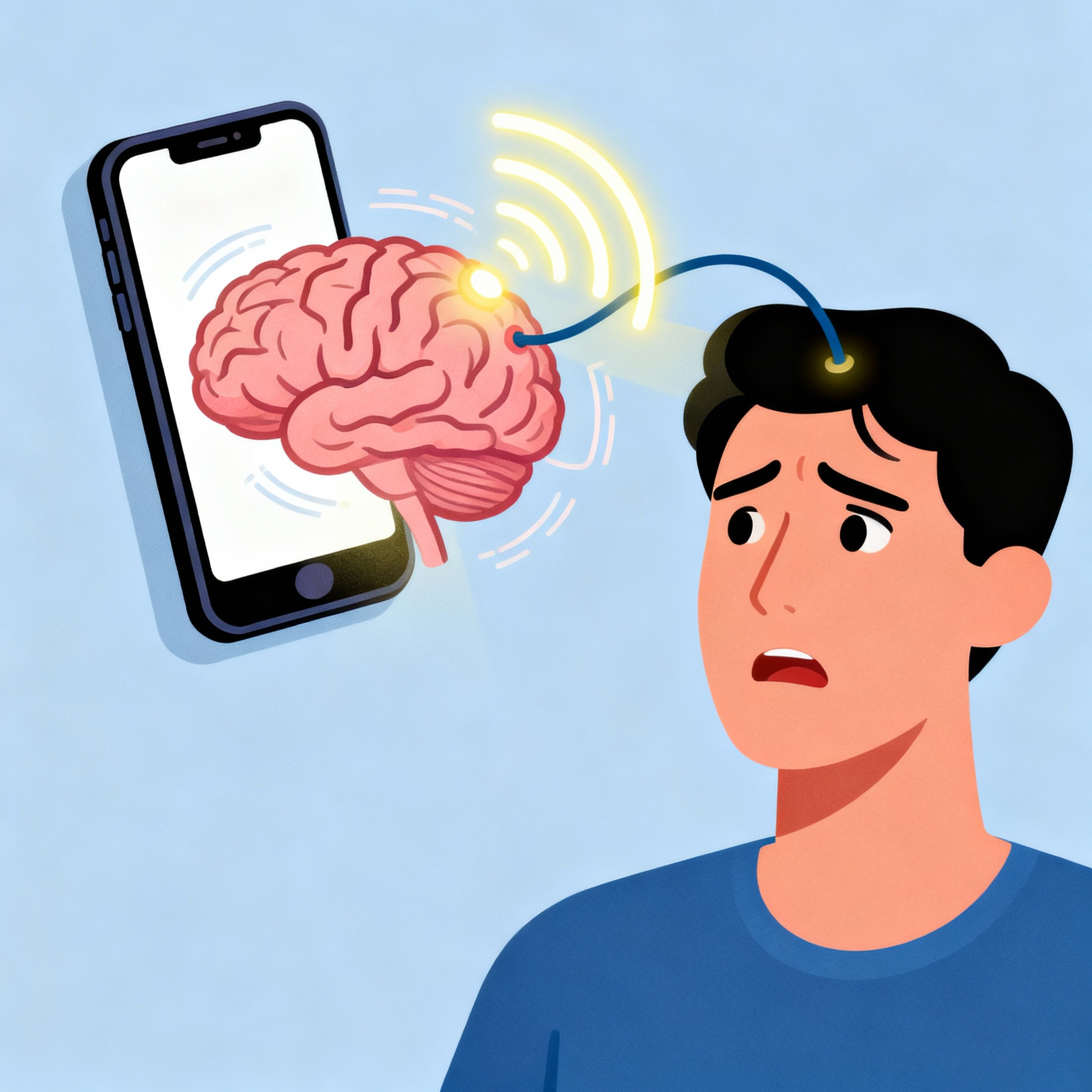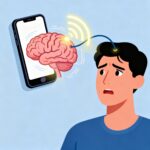Your smartphone might be your most trusted companion, but it’s also quietly reshaping how your brain handles stress, attention, and anxiety. If you’ve noticed yourself feeling more scattered, checking your phone hundreds of times daily, or experiencing that familiar panic when your battery dies, you’re not alone—and you’re not imagining the effects.
This guide is for anyone who suspects their phone habits are making their anxiety worse, from busy professionals drowning in notifications to parents struggling to stay present with their families. We’ll break down the real science behind phone addiction and anxiety, helping you understand what’s happening in your brain when you reach for that device.
First, we’ll explore how smartphones trigger your brain’s reward system, creating dopamine-driven cycles that keep you coming back for more hits of validation and stimulation. You’ll learn to spot the warning signs of phone addiction and understand how this constant digital stimulation is rewiring your neural pathways in ways that amplify anxious thoughts.
Then we’ll dive into the hidden cognitive costs you’re already paying—from memory problems to reduced focus—and examine how social media platforms deliberately exploit your brain’s vulnerabilities. Finally, you’ll discover proven strategies for digital detox mental health, including mindful phone use techniques that can help you reclaim control without going completely off the grid.
Your relationship with your phone doesn’t have to control your mental wellbeing. Let’s figure out how to make technology work for you again, not against you.
Understanding How Smartphones Trigger Your Brain’s Reward System
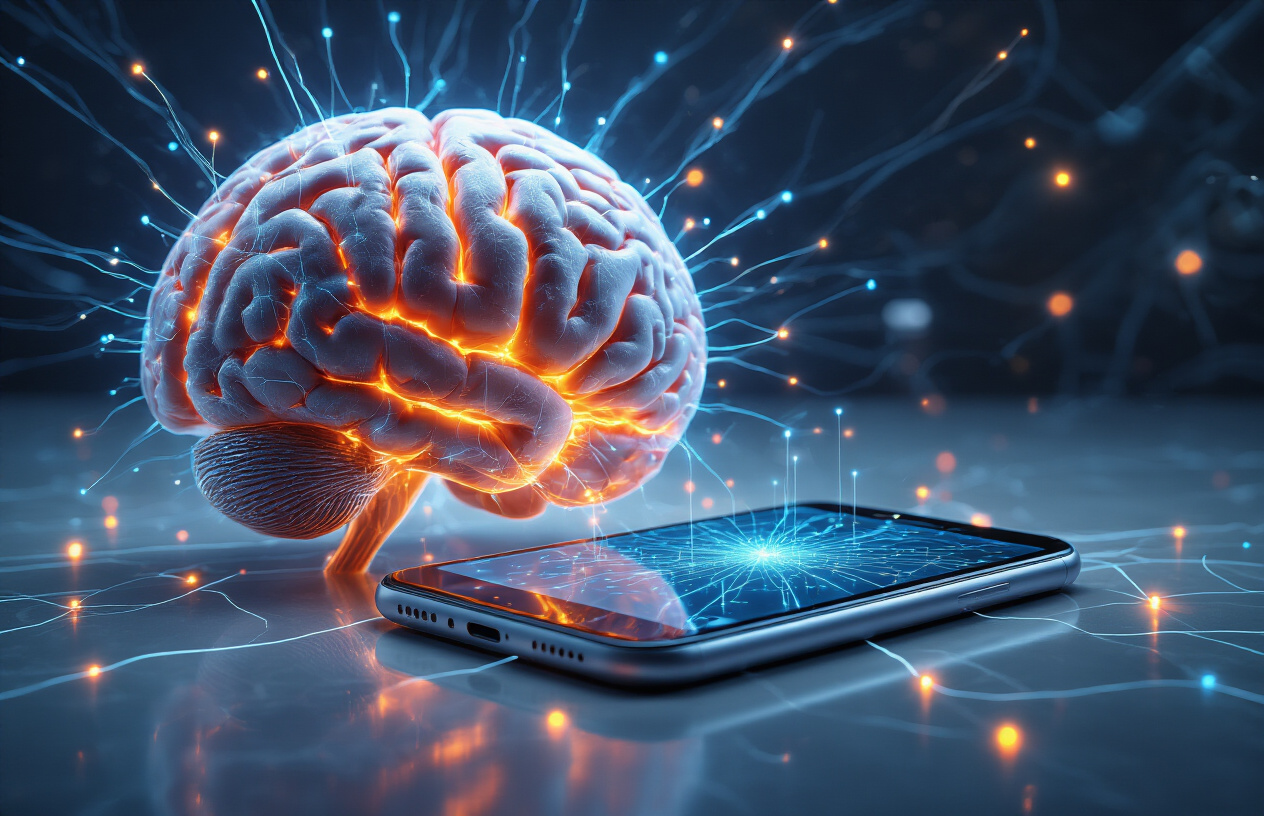
The dopamine feedback loop from social media and apps
Your smartphone operates as what Dr. Anna Lembke, chief of Stanford University’s dual diagnosis addiction clinic, calls the “modern-day hypodermic needle.” Every notification, like, and swipe triggers a sophisticated neurochemical process that your brain interprets as rewarding behavior. This process centers around dopamine, often dubbed “the Kim Kardashian of molecules” due to its widespread recognition and influence on human behavior.
Contrary to popular belief, dopamine doesn’t actually provide pleasure itself. Instead, it motivates us to seek activities we anticipate will bring pleasure. Scientists use dopamine levels to measure “the addictive potential of any experience” – the higher the dopamine release, the more addictive the activity becomes. When you reach for your phone expecting validation from social media or entertainment from apps, your brain releases dopamine in anticipation of that reward.
The feedback loop becomes self-perpetuating through a process called homeostasis – your brain’s natural self-regulating system. For every dopamine high, there’s an inevitable low. After checking your phone and receiving that brief satisfaction from likes, messages, or engaging content, you experience a dopamine dip that creates craving for the next digital hit. This pattern explains why you might find yourself compulsively checking your device every few minutes, seeking to escape that uncomfortable comedown state.
Digital platforms have engineered this loop to be particularly powerful. Unlike substances that eventually run out, your smartphone provides unlimited access to dopamine triggers. Netflix shows automatically queue the next episode, social media feeds refresh endlessly, and notifications arrive unpredictably – creating what behavioural scientists recognize as the most addictive reward schedule possible.
How constant stimulation creates neurological conditioning
The unprecedented access to digital stimulation has fundamentally altered how your brain processes reward and attention. Unlike previous generations who had to tolerate periods of boredom or distress, constant smartphone use means you’re “interrupting yourself” for quick digital hits throughout the day. This pattern prevents deep concentration on challenging tasks and disrupts your ability to enter creative flow states.
When you consistently turn to your phone for instant gratification, you’re essentially training your brain to operate primarily from the limbic system, which processes emotions and immediate responses. This constant emotional processing comes at the expense of your prefrontal cortex – the brain region responsible for future planning, problem-solving, and personality development. Over time, this neurological conditioning makes you increasingly dependent on external stimulation to maintain basic functioning.
The conditioning process becomes particularly problematic because digital content removes life’s natural rough edges. Social media presents filtered, perfected versions of reality with no awkward silences or uncomfortable moments. When confronted with complex or unsettling issues in work or relationships, your smartphone offers an always-available escape route from life’s inherent difficulties.
This constant availability of stimulation has created what Lembke describes as a fundamental shift in human experience. Previous generations had built-in periods of understimulation that allowed their brains to process experiences naturally. Today’s digital environment eliminates these essential pauses, leaving your nervous system in a perpetual state of activation and expectation.
Why your brain becomes addicted to digital validation
The neurological foundation of smartphone dopamine addiction lies in your brain’s unchanged reward systems encountering unprecedented access to stimulating content. While your neural architecture hasn’t evolved significantly over centuries, your environment now provides instant access to the very stimuli your ancestors spent tremendous energy seeking – social connection, entertainment, and novel information.
Digital validation triggers the same reward pathways that once motivated survival behaviors. Each like, comment, or share activates your brain’s reward system, creating a powerful association between phone use and social acceptance. This process becomes particularly compelling because social media platforms use variable ratio reinforcement schedules – you never know when you’ll receive validation, making the behavior extremely difficult to extinguish.
The addiction potential intensifies because digital platforms enable bingeing on a scale previously impossible in human history. When you engage with pleasurable digital content repeatedly, homeostasis forces your brain to compensate by bringing your baseline mood “lower and lower and lower.” Each interaction becomes less satisfying, yet you become increasingly dependent on these digital stimuli to feel normal.
This dependency develops along a spectrum, with addiction being “deemed worthy of clinical care when it significantly interferes with someone’s life and ability to function.” However, even minor digital dependencies carry hidden costs that affect your capacity to be fully present as a parent, spouse, or friend. The pernicious nature of this conditioning means you may not recognize these subtle impacts while experiencing them, creating a cycle where smartphone use simultaneously promises connection while actually diminishing your ability to form meaningful relationships.
Recognizing the Signs of Phone Addiction and Anxiety
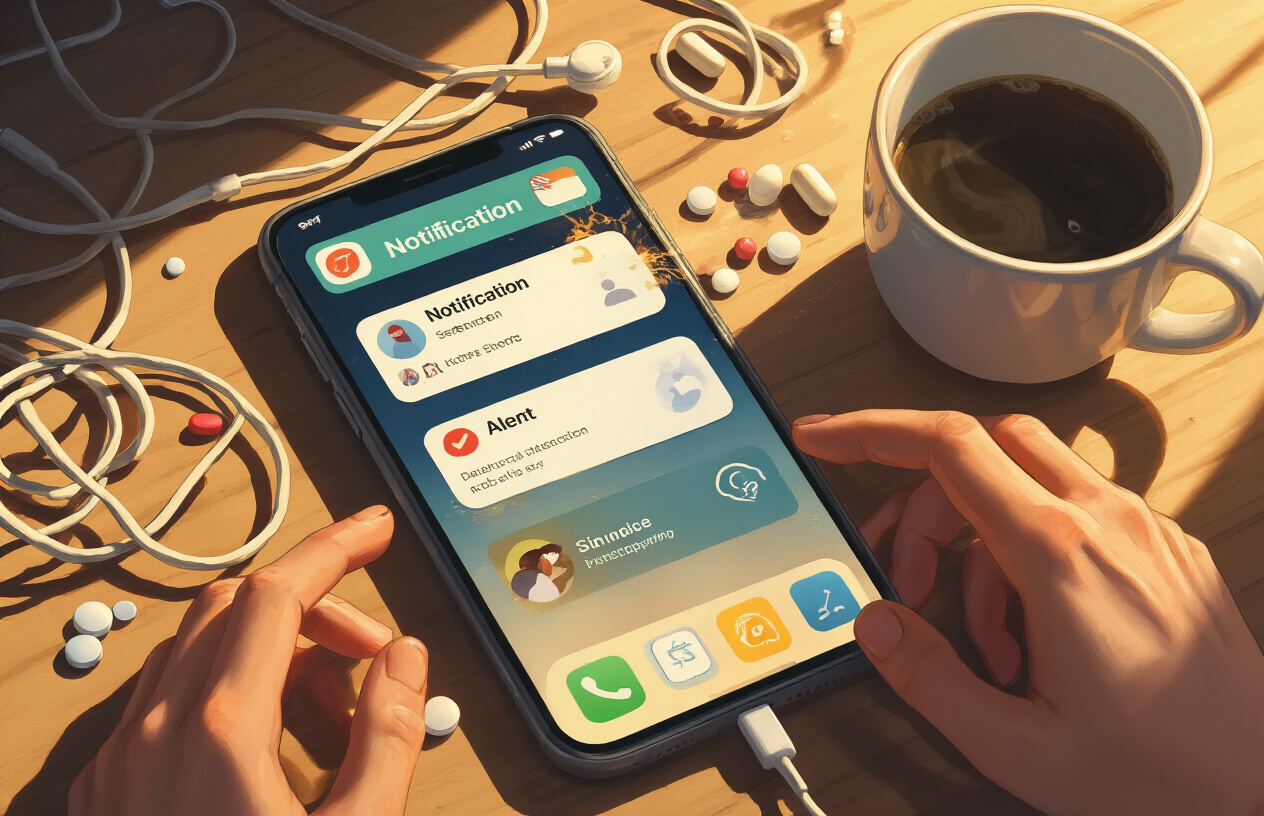
Understanding Nomophobia and Separation Anxiety from Devices
Phone addiction and anxiety manifest through a recognized psychological condition called nomophobia – literally meaning “NO MObile PHone PhoBIA.” This term describes the fear of being detached from mobile phone connectivity, affecting an estimated 53% of mobile phone users who experience apprehension when they lose their phone, run out of battery, or have no network coverage.
The psychological symptoms of nomophobia mirror those of other anxiety disorders, including:
- Anxiety and panic responses
- Respiratory alterations and breathing changes
- Trembling and physical agitation
- Perspiration and sweating
- Disorientation and confusion
- Tachycardia (rapid heartbeat)
Research reveals that various psychological factors contribute to smartphone rewiring brain patterns, particularly in individuals with low self-esteem and extroverted personalities. What makes nomophobia particularly complex is its relationship with existing mental health conditions – social anxiety, panic disorders, and other anxiety conditions can both trigger and result from excessive phone dependence.
Studies show that 58% of males and 47% of females suffer from mobile phone anxiety, with an additional 9% experiencing stress when their devices are switched off. The anxiety levels associated with phone separation have been compared to “wedding day jitters,” highlighting the severity of this modern psychological phenomenon.
The Alarming Statistics of Daily Phone Checking Habits
The compulsive nature of phone use reveals itself through staggering behavioral patterns that demonstrate how technology anxiety disorder has become normalized in our daily lives. Research among undergraduate students found that 77% check their cell phones more than 35 times per day, with 64% at risk of developing nomophobia and 23% already exhibiting nomophobic behaviors.
Key statistics paint a concerning picture of our digital dependency:
| Behavior | Percentage |
|---|---|
| People who never switch off phones | >50% |
| Students keeping phones accessible 24/7 | 73% |
| Individuals checking phones immediately upon waking | 61% |
| Those who feel stressed without their phone | 20% |
| Students repeatedly checking for messages/calls | 38.5% |
| People who feel secure with phone nearby | 56% |
The scope of screen time mental health impacts extends beyond mere usage frequency. College students now spend more than 9 hours daily on their mobile phones, representing what researchers describe as “possibly the biggest non-drug addiction of the 21st century.” This excessive use creates a “paradox of technology” – simultaneously freeing us from the real world while enslaving us to the virtual one.
More than half of nomophobics report they never switch off their mobile phones, and many carry multiple devices along with battery chargers to avoid disconnection from the virtual world. This behavior pattern, termed “over-connection syndrome,” significantly reduces face-to-face social interactions and interferes with family relationships.
How Notification Triggers Create Chronic Stress Responses
The constant barrage of notifications has fundamentally altered how our brains process stress and reward signals, contributing to smartphone dopamine addiction patterns. Each notification ping triggers what researchers call “ringxiety” – the compulsive need to check phones frequently to avoid missing any digital communication.
Notification-driven stress responses manifest through several mechanisms:
Continuous Connectivity Pressure
The expectation of remaining constantly connected to social networks leaves no time for stress relief during solitude – an essential component of mental well-being. This perpetual state of digital vigilance creates chronic stress responses that mirror those seen in anxiety disorders.
Anticipatory Anxiety Cycles
Nomophobics develop patterns of impulsive phone checking as a protective mechanism, often preferring virtual interactions over face-to-face communication. This avoidance behavior reinforces social anxiety tendencies, creating a cycle where individuals become increasingly dependent on digital validation to manage their stress.
Physical Stress Manifestations
The chronic stress from notification dependency can lead to physical problems including pain in elbows, hands, and necks from constant device use. The continuous pressure to respond to digital communications creates a state of hypervigilance that exhausts the nervous system.
Research indicates that victims of panic disorders show particular vulnerability to notification-triggered anxiety, with 44% reporting feeling “secure” only when their mobile phones are accessible. The complexity of this condition challenges both patients and healthcare providers, as nomophobia shares clinical symptoms with other psychological disorders, requiring diagnosis by exclusion.
The economic strain from excessive data usage and compulsive online purchasing through mobile apps adds another layer of stress, creating financial insecurity that compounds the psychological effects of smartphone dependency. This multifaceted impact demonstrates how notification triggers have evolved beyond simple communication tools into chronic stress generators that fundamentally alter our mental health landscape.
The Hidden Cognitive Costs You’re Already Paying
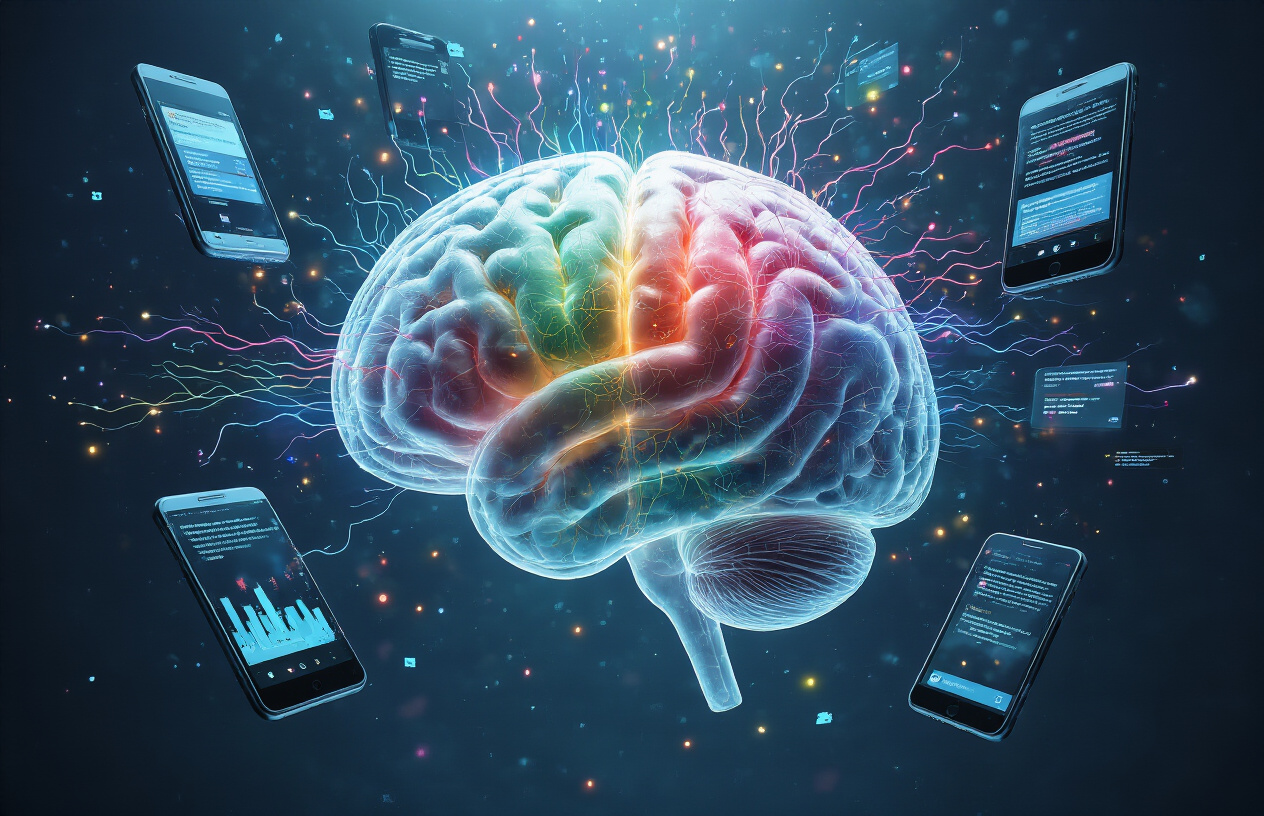
Brain drain effect reduces performance even when phone is off
The most shocking discovery about cognitive effects of smartphones isn’t what happens when you’re actively using your device—it’s what occurs when your phone is simply present in your environment. Research reveals that smartphones create a “brain drain” effect that significantly impairs cognitive performance even when the device is turned off and you’re not consciously thinking about it.
This phenomenon occurs because smartphones have become so deeply integrated into our daily lives that they automatically capture a portion of our limited cognitive resources. Your brain treats your smartphone as a high-priority stimulus, similar to how you automatically respond to hearing your own name. Even when you’re successfully ignoring your phone, your brain is actively working to suppress the automatic attention it commands, leaving fewer resources available for the task at hand.
Studies demonstrate that individuals perform worse on measures of working memory capacity and fluid intelligence when their smartphones are visible nearby compared to when phones are placed in another room entirely. The effect is so pronounced that it persists regardless of whether the phone is powered on or off, and occurs without any notifications or alerts. The mere presence of the device in your visual field is enough to create measurable cognitive impairment.
Decreased reading comprehension and problem-solving abilities
Now that we understand how phones drain cognitive resources, let’s examine the specific impacts on your fundamental thinking abilities. Technology anxiety disorder manifests not just as emotional distress, but as measurable declines in core cognitive functions that affect everything from work performance to learning capacity.
Working memory—your brain’s system for temporarily holding and manipulating information—becomes significantly compromised when smartphones are present. This system is crucial for reading comprehension, as it allows you to connect ideas across sentences and paragraphs, track narrative threads, and integrate new information with existing knowledge. When your phone occupies a portion of these limited-capacity resources, your ability to deeply understand and retain written material deteriorates markedly.
Problem-solving abilities suffer similarly through impacts on fluid intelligence—your capacity to reason through novel situations and find creative solutions. Fluid intelligence relies heavily on the same attentional resources that smartphones automatically commandeer. Research using complex reasoning tasks like Raven’s Progressive Matrices shows that performance drops substantially when phones are salient in the environment, even without active use.
The effects are particularly pronounced for individuals with higher smartphone dependence. Those who report greater reliance on their devices experience larger performance decrements when phones are present, suggesting that the brain drain effect scales with how personally relevant and attention-grabbing your device has become.
Why multitasking with phones damages focus and attention
With this cognitive foundation in mind, the devastating effects of attempted multitasking with phones become clear. The human brain fundamentally cannot multitask in the way we imagine—instead, it rapidly switches attention between competing demands, with each switch carrying significant cognitive costs.
When you attempt to use your phone while engaged in another task, you’re forcing your brain to constantly redirect its limited attentional resources. Each time you glance at a notification, respond to a message, or check an app, your brain must disengage from the primary task, reorient to the phone, process the new information, then attempt to re-engage with the original activity. This process consumes substantial mental energy and leaves residual interference that impairs performance on both tasks.
Mindful phone use becomes crucial when we recognize that attention operates through two key mechanisms: orientation (where your conscious focus is directed) and allocation (how cognitive resources are distributed). Smartphones disrupt both processes simultaneously. They automatically attract the orientation of attention through their high personal relevance and salience, while also consuming allocational resources through the constant need to inhibit automatic responses to the device.
The research demonstrates that these effects persist across different types of cognitive demands, from simple sustained attention tasks to complex reasoning problems. The brain drain occurs because the finite pool of attentional resources that supports working memory and fluid intelligence becomes partially occupied with managing the smartphone’s automatic pull on attention, reducing the capacity available for other cognitive processes.
Understanding these hidden costs reveals why many people report feeling mentally fatigued and less sharp despite not actively overusing their phones—the mere presence of these devices in our environment is quietly undermining our cognitive capabilities throughout the day.
How Social Media Amplifies Mental Health Problems
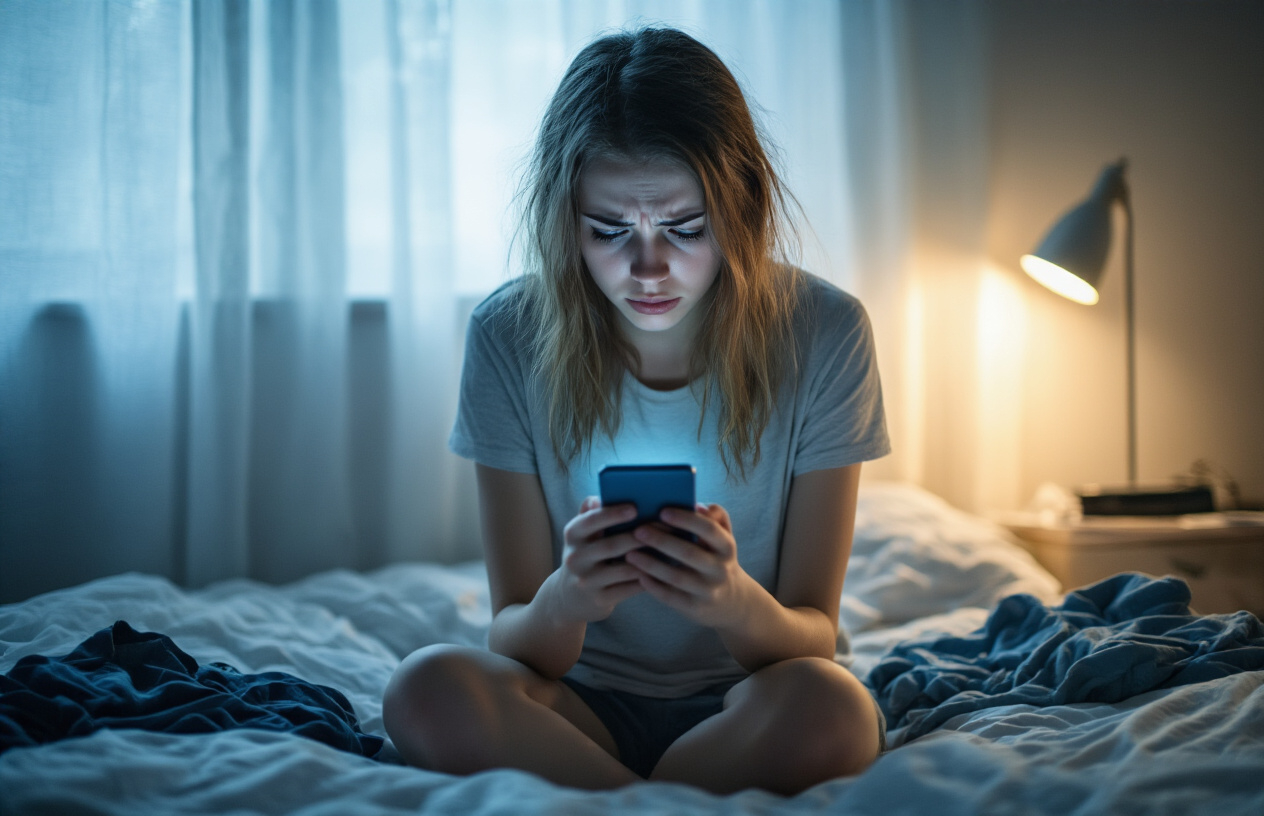
The Rise of Self-Diagnosis Culture on Platforms Like TikTok
Social media platforms, particularly TikTok, have become breeding grounds for self-diagnosis culture, where users share mental health content without professional oversight. This phenomenon creates a dangerous cycle where individuals, especially teens and young adults, begin identifying with mental health conditions based on viral content rather than proper medical evaluation. The addictive nature of social media amplifies this issue by releasing dopamine when users receive likes and comments on their posts, creating a reinforcement loop around mental health content.
The problem becomes more concerning when considering that 81% of teens use social media regularly, putting a massive portion of the population at risk of misinformation about mental health conditions. Unlike professional diagnosis, social media content lacks the nuanced understanding required to properly identify complex mental health issues. Users may see relatable symptoms in trending videos and immediately assume they have specific conditions, leading to inappropriate self-treatment or unnecessary anxiety about their mental state.
This self-diagnosis culture is particularly harmful because it operates within echo chambers where similar content is repeatedly shown to users. The algorithms designed to keep users engaged often present content that confirms their existing beliefs or concerns, making it difficult to get balanced, evidence-based information about mental health.
Finding the Sweet Spot of 30 Minutes Versus Harmful Overuse
Research from the University of Pennsylvania provides crucial insight into healthy social media consumption patterns. In their study of 143 undergraduates, participants who limited their Facebook, Instagram, and Snapchat usage to just 10 minutes per platform per day showed significant reductions in loneliness and depression over three weeks. This stands in stark contrast to the control group who continued unlimited social media use.
The average person currently spends 145 minutes on social media daily—nearly ten times the amount shown to be beneficial in the study. This excessive usage pattern contributes to increased anxiety, depression, and sleep disruption. When social media use becomes problematic, it activates the brain’s reward center unpredictably, similar to a slot machine effect. As Dr. Jacqueline Sperling from McLean Hospital explains, “When the outcome is unpredictable, the behavior is more likely to repeat.”
To find your personal sweet spot, consider conducting a behavior experiment. Rate your emotions on a scale of 0-10 before and after using social media at the same time each day for a week. If you notice feeling less happy after usage, it’s time to implement limits. Many users find success by setting app time limits through phone settings or designating specific hours for social media usage, helping break the cycle of constant checking and refreshing.
Breaking Free from Echo Chambers and Confirmation Bias
Social media algorithms create echo chambers by showing users content similar to what they’ve previously engaged with, particularly around mental health topics. This technological design means that someone experiencing anxiety might continuously see anxiety-related content, reinforcing their fears and preventing exposure to balanced perspectives or positive mental health strategies.
The confirmation bias inherent in social media feeds becomes especially problematic when dealing with mental health concerns. Users seeking validation for their feelings often find endless content that confirms their worst fears about their mental state, rather than helpful, evidence-based information. This can transform normal life stresses into perceived mental health crises, amplifying phone addiction and anxiety symptoms.
Breaking free from these echo chambers requires intentional action. Start by unfriending or unfollowing accounts that consistently make you feel worse about yourself or your mental health. Actively seek out diverse, professionally-backed mental health resources rather than relying solely on user-generated content. Consider following licensed mental health professionals who provide balanced, educational content rather than sensationalized personal stories.
Additionally, diversify your feed beyond mental health content entirely. Engage with posts about hobbies, nature, educational content, or positive news to break the cycle of negative mental health-focused algorithms. This approach helps rewire your social media experience from a source of anxiety confirmation to a more balanced digital environment that supports rather than undermines your mental well-being.
Real Results from Digital Detox and Mindful Phone Use

Success stories from people who switched to basic phones
Now that we have covered how smartphones trigger anxiety and rewire our brains, let’s explore the transformative results people experience when they take decisive action through digital detox and mindful phone use. Real individuals who made the switch to basic phones or implemented strict digital boundaries report remarkable improvements in their mental health and overall well-being.
The most striking changes occur within the first few weeks of reducing smartphone dependency. People consistently report enhanced mental health as their primary benefit, experiencing a direct reset from the dopamine-driven cycle that fuels phone addiction and anxiety. Without constant exposure to social media and digital communication that triggers excessive dopamine release, users escape the unhealthy cycle of highs and lows that contribute to anxiety, depression, and feelings of inadequacy.
Those who embraced digital detox practices discovered that their irregular eating patterns improved dramatically. The constant phone use that previously disrupted their daily habits supporting mental and physical well-being was replaced with more structured, mindful routines. This shift proved crucial since frequent phone use is directly linked to poor diet choices and sleep disturbances—all significant risk factors for depression and other health issues.
Benefits of increased presence and creative thinking
With smartphone distractions eliminated, users experience a profound boost in creativity and cognitive function. Without the constant digital noise keeping them plugged into a virtual world but disconnected from themselves and the present moment, people rediscover their ability to think deeply and creatively.
The restoration of focus becomes particularly evident during screen-free hours. Users report their creative juices flowing more freely when digital devices no longer fragment their attention throughout the day. Many discover hidden talents or rediscover long-forgotten interests that were previously overshadowed by endless scrolling and notification responses.
Enhanced relationships emerge as another significant benefit. People who previously used their devices as social crutches, avoiding real-life interactions, found their ability to connect deeply with others dramatically improved. This shift helps combat the loneliness, anxiety, and depression that digital over-dependence reinforces. Real-world conversations become more meaningful when phones are kept on airplane mode during family time or friend gatherings.
Sleep quality improvements represent one of the most immediate and noticeable changes. Users experience better rest when they eliminate blue light exposure that disrupts the body’s circadian rhythm by suppressing melatonin production. Without screens tricking their brains into thinking it’s daytime, falling and staying asleep becomes significantly easier. The digital curfew practiced 1-2 hours before bedtime promotes relaxation and encourages more restorative activities like journaling, reading, or mindful conversation.
How to use technology with intention rather than compulsion
The key to sustainable digital wellness lies in creating intentional boundaries rather than complete elimination. Successful users emphasize that digital detox isn’t about eliminating technology entirely but developing a healthier relationship with it through mindful choices and consistent boundaries.
Setting designated screen-free hours each day allows the mind to rest and reset, breaking the cycle of compulsive checking that characterizes phone addiction and anxiety. During these periods, users practice deep, mindful breathing instead of the shallow breathing or breath-holding that typically occurs when checking devices—a pattern that triggers the body’s fight-or-flight response.
Chronic digital stress from constant connectivity leads to persistent stress hormone levels, creating blood sugar imbalances, immune dysfunction, hormonal disruptions, and poor sleep. By keeping phones out of reach during breaks and implementing regular tech-free moments such as morning or weekend detoxes, users support their overall well-being while maintaining necessary connectivity.
The most successful approaches involve clear intention-setting, where individuals decide specific detox periods and define their goals. Whether implementing a day, weekend, or week-long break, having concrete objectives helps maintain commitment. Informing friends, family, and colleagues about these boundaries creates accountability and helps others appreciate the benefits of increased presence.
The evidence is clear: our phones are fundamentally reshaping our brains, often in ways that amplify anxiety and diminish our cognitive abilities. From triggering addictive dopamine loops to causing measurable brain drain effects and increasing stress responses, these devices are extracting a hidden cognitive cost for their convenience. The average person checks their phone 344 times daily, creating a constant state of neurological overdrive that overwhelms our decision-making centers and activates our fear responses.
But awareness is the first step toward change. You don’t need to abandon your smartphone entirely – you need to reclaim control over your relationship with it. Start by implementing the proven strategies we’ve discussed: exercise regularly to boost gray matter, limit social media to under 60 minutes daily, avoid multitasking, read on paper when possible, and actively use your memory instead of outsourcing everything to your device. Most importantly, ask yourself honestly: are you in control of your phone, or is your phone in control of you? The answer to that question will determine whether technology serves your mental well-being or undermines it.

